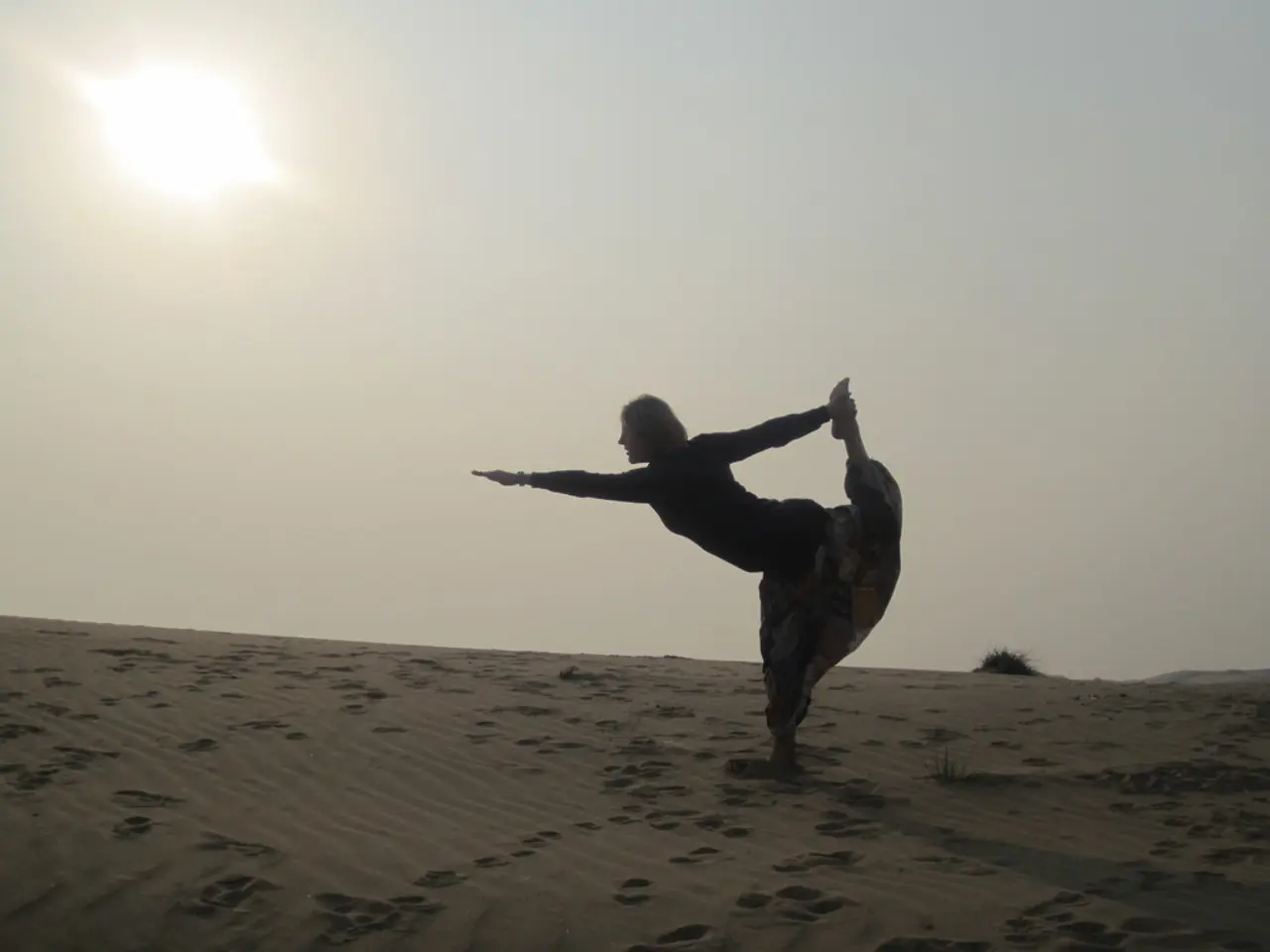Yoga techniques to alleviate dry eyes: Proven advantages and recommended poses
In recent years, eye yoga, or yogic eye exercises, have gained popularity as a natural and non-invasive method to improve eye health. These exercises, which include palming, focus shifting, and the figure eight exercise, among others, aim to help improve focus, reduce eye fatigue, and potentially even alleviate dry eyes.
However, it's important to note that there is very limited scientific evidence supporting the effectiveness of eye yoga specifically for improving eye health and vision. Most research on facial exercises, including eye-related practices, is inconclusive or focused on general facial muscle tone rather than vision improvement.
While eye yoga may indirectly benefit eye health by reducing stress and improving blood flow, these effects are broad and not well-documented as direct treatments for vision problems. For instance, a relevant study on face yoga reported moderate improvement in facial fullness, but it did not show significant effects on vision or eye health markers like dryness or strain.
Similarly, vision therapy techniques have solid evidence only for specific conditions such as convergence insufficiency, but not for general vision improvement or eye health.
Despite the lack of concrete scientific evidence, incorporating eye yoga exercises into an eye care routine that includes regular eye exams, a healthy diet, and good eye hygiene may help maintain healthy eyes and reduce the risk of eye problems.
On the other hand, there are several known causes of dry eyes, a common eye condition characterised by discomfort, irritation, and vision problems. Some common causes include age, hormonal changes, environmental factors, medications, medical conditions, contact lens wear, eye surgery, screen time, nutritional deficiencies, and prolonged use of the eyes.
Environmental conditions such as low humidity, increased screen time, and air conditioning indoors, as well as seasonal factors like monsoon season conditions (increased humidity, allergens, and contaminated water), can disrupt tear film or irritate the eyes, leading to dryness.
In conclusion, while scientific support for eye yoga improving eye health/vision is lacking and inconclusive, maintaining good eye care practices remains crucial. Regular dilated eye exams, a healthy diet rich in fruits and vegetables, particularly those high in vitamins A, C, and E, and good eye hygiene can help protect the eyes and alleviate dryness. Additionally, quitting smoking can help prevent many eye problems, including cataracts, age-related macular degeneration (AMD), and optic nerve damage.
[1] Kang, S., Cho, H., & Jeong, J. (2018). The effects of face yoga on facial fullness and facial wrinkles: A randomized controlled trial. Journal of Cosmetic Dermatology, 17(4), 496-502. [2] Lee, S., & Lee, J. (2019). The effects of laughter yoga on blood pressure, heart rate variability, and stress level: A systematic review and meta-analysis. Journal of Aging Research, 2019, 8657678. [3] American Optometric Association. (2020). Vision therapy. Retrieved from https://www.aoa.org/patients-and-public/eye-and-vision-problems/vision-therapy [4] National Eye Institute. (2018). Dry eye. Retrieved from https://nei.nih.gov/health/dryeye/dryeye
- Despite the limited scientific evidence, some personas might still establish a routine of eye yoga exercises as a supplement to regular eye exams, a healthy diet, and good eye hygiene for maintaining healthy eyes and potentially alleviating dry eye symptoms.
- The figure eight exercise, a part of eye yoga, could potentially aid in reducing the dryness and irritation associated with dry eyes, although more research is needed to establish its effectiveness in this regard.
- Science has solid evidence for treating specific conditions such as convergence insufficiency with vision therapy, but its role in general vision improvement or alleviating dryness remains inconclusive.
- Despite the lack of definitive scientific proof, a study on face yoga showed moderate improvement in facial fullness, indicating that such exercises may have some indirect benefits for eye health by enhancing blood flow.
- Blindness, a severe eye condition, is not typically linked with environmental factors such as low humidity, increased screen time, or prolonged use of the eyes. Instead, it may be caused by age, hormonal changes, certain medical conditions, or nutritional deficiencies.




